Basmati rice is an impossibly long-grained rice typically enjoyed with fabulously spiced Indian curries and all manner of flavorful dal.
Maybe you're planning to make something tasty tonight and you need some perfect basmati rice to go with? Well then, you are in for a treat aren't you?
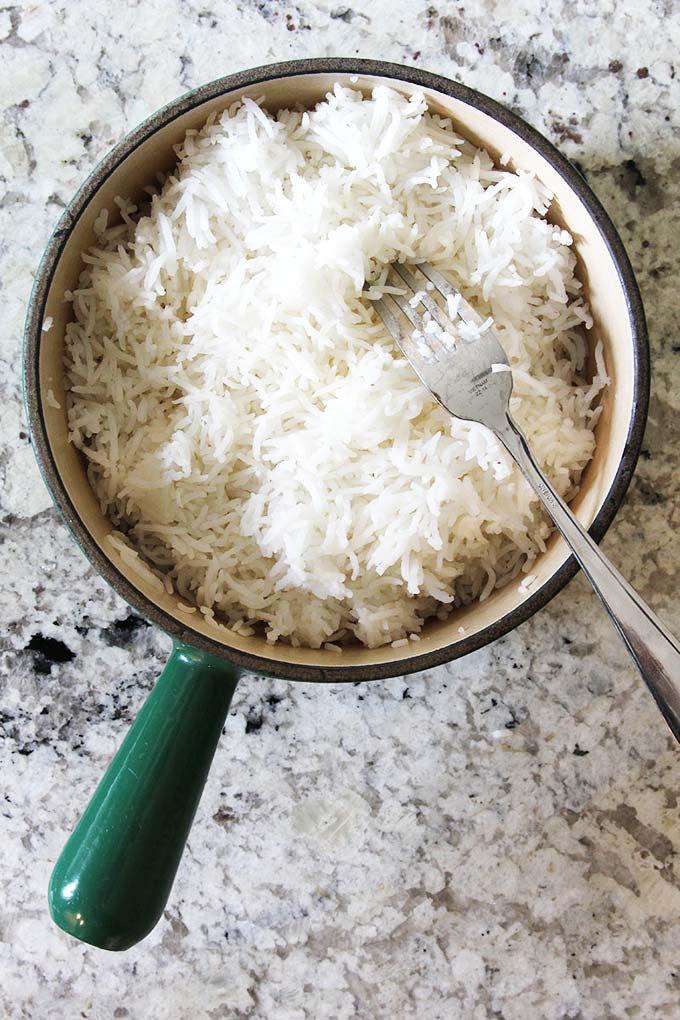
When basmati rice cooks, it emits a nutty, aromatic aroma. There is nothing else like the smell, and it is something to cherish.
The individual grains of rice also lengthen to incredible proportions when cooked, and stay separate, which makes it beautiful to look at, as well as fun to eat.
Jasmine rice is frequently confused with basmati, but it is not the same. Jasmine rice, from Thailand, is more floral and sticky. Jasmine swells when cooked, rather than lengthens.
But if jasmine is all that you have on hand, feel free to use it up. (I cannot guarantee the cooking methods below will work though.)
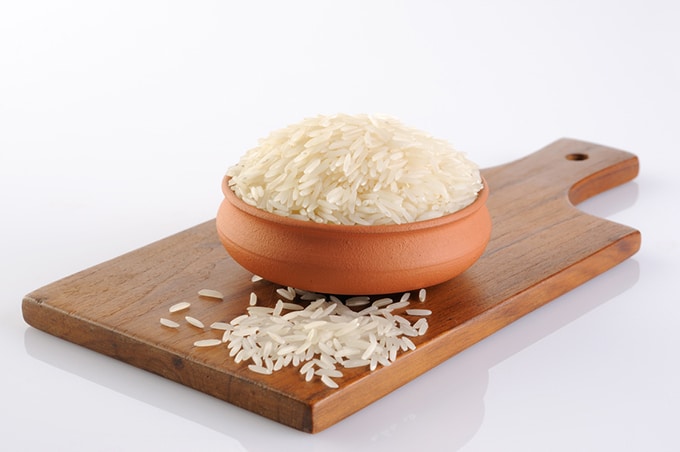
When purchasing basmati rice, look for the best varieties grown in the foothills of the Himalayas around Dehradun, India, in the northern state of Uttarakhand. Other good varieties come from Pakistan's Himalayan region, and India’s Bihar state.
Basmati rice grains lengthen to incredible proportions when cooked. 2 Methods for Perfect Basmati RiceClick To TweetTilda, which is a brand processed in the UK, is a good and affordable brand of basmati rice grown in the Himalayas of India and Pakistan. It is widely available in the United States.
A final tip when purchasing any basmati rice. If possible, examine the rice. Look for long, fat grains, with a golden yellow hue. There should not be many broken grains.
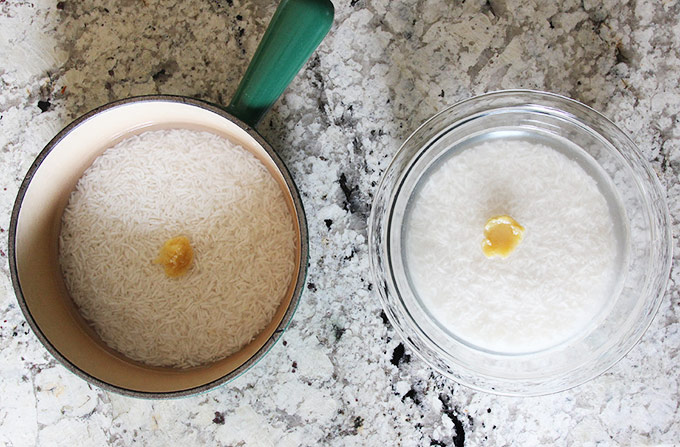
Cooking Basmati Rice
There are a number of methods for cooking perfect basmati rice, but I am sharing just two, because they give consistently good results.
The first is the steam absorption method using a saucepan. This is the typical method that most cooks are familiar with.
I have included a few points about process which may be new to you. Following these will ensure that you get perfect basmati rice every time.
The second method is the double-steam absorption method, using a bowl placed inside a larger pot.
This second method was completely new to me before I encountered Indian cuisine. In India, an insert holding the rice and water is placed inside a larger covered pot with a bit of water at the bottom.
The steam produced by the water in the bottom of the larger pot surrounds the rice pot and cooks the rice at a lower temperature over a longer period of time.
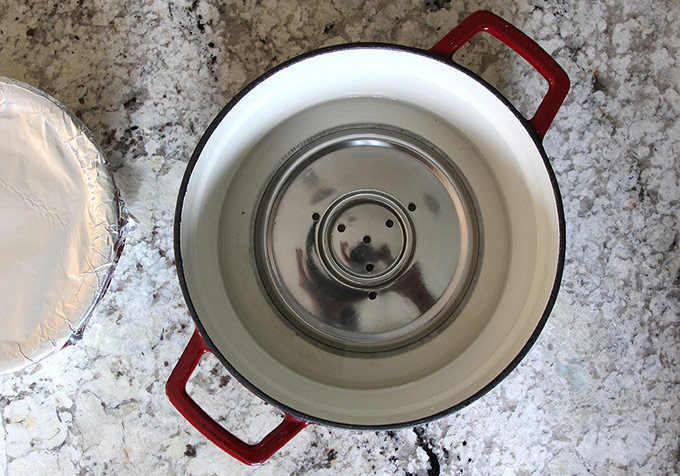
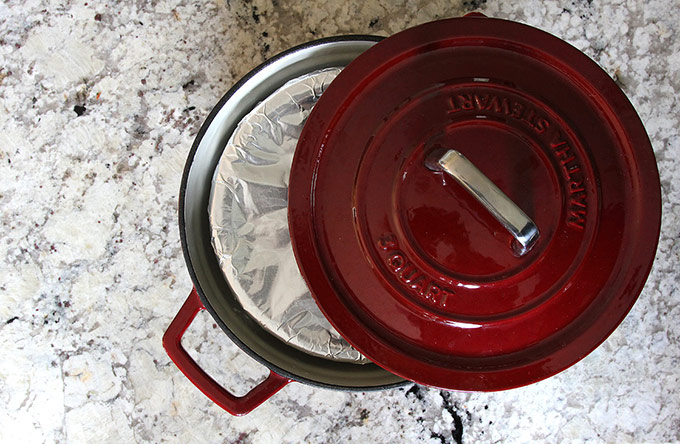
According to Yamuna Devi, writing in “The Art of Indian Vegetarian Cooking,” the double steam method “produces very soft, evenly cooked rice with well-separated, unsplit grains.”
I will detail both methods below. But first, I have for you 12 very important rice cooking tips to help you get that perfect rice.
12 Rice Cooking Tips
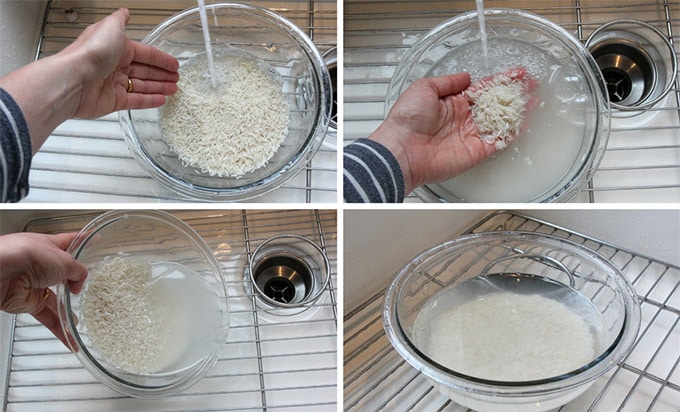
- Always wash your rice before cooking it. Place the rice in a bowl, and cover with cold water. Use your fingers to gently stir the rice and water, and then drain off the water. Do this 2–3 times, until the water runs clear.
- Soak your rice for at 10–20 minutes before cooking it. Soaking aids water absorption as the rice is cooking. It relaxes the rice and makes the cooking more even. Be gentle handling the rice after soaking, as the grains break easily.
- Soak your rice in your rice pot with the correct amount of water for the rice. Use the soaking water as your rice cooking water. This preserves valuable nutrients and flavor.
- In terms of how much water to use, I use 1 cup rice to 2 cups water with consistently good results. However, rice cooks differently based on its age, with older rice being drier and requiring more water. My advice is to measure the water you use and note it down so that you can adjust for next time if needed.
- Be aware that the amount of water you use will affect whether the rice is dry or wet after cooking. The proportion I suggest is a personal preference, and it will result in rice that is somewhere in the middle between wet and dry. If your rice is too dry, simply add a bit more water and cook longer. If it is too wet, leave the lid off for a minute so steam escapes.
- Add a teaspoon of ghee (or vegetable oil), and a pinch of salt, to the rice cooking water. Neither of these are necessary, but the bit of fat helps to keep the rice grains separate and fluffy, and salt enhances the flavor.
- Use your heaviest pot for cooking rice. The heavy bottom will protect the rice from burning, and the heavy sides will surround the rice with heat, helping it to cook evenly. I love using Staub or Le Creuset’s enameled cast-iron pots for cooking rice. These pots are expensive, but well worth the investment, because you will have them for decades in near-perfect condition.
- Use a pot that is the right size. Allow at least 2 inches between the top of the cooked rice and the lid to allow for steam. Do not try to cook a small amount of rice in a large pot.
- Ensure that your lid is tight fitting and/or heavy. A heavy lid prevents steam from escaping and helps the rice to cook efficiently. If your lid is not heavy, you can try covering the pot with a clean dish towel and then putting on the lid. Pull the edges of the cloth up on top of the lid so it doesn’t accidentally catch fire.
- Do not open the lid while the rice is cooking. As long as you have turned the rice down to very low before covering it, give it 15 minutes to cook before checking for soft rice. If you do need to check for doneness, or for water levels, be mindful to do it quickly, and replace the lid as quickly as you can.
- Time your rice to be ready with the rest of your meal. If you do find the rice is going to be ready early, you could turn off the heat early, when the rice is only 90 percent done. Leave the lid on, and the rice will continue to steam and cook.
- If you need to reheat rice for any reason, try steaming it for best results. Another option is to heat the rice in a non-stick skillet. Add a bit of water and stir continuously until the rice is hot and rehydrated.
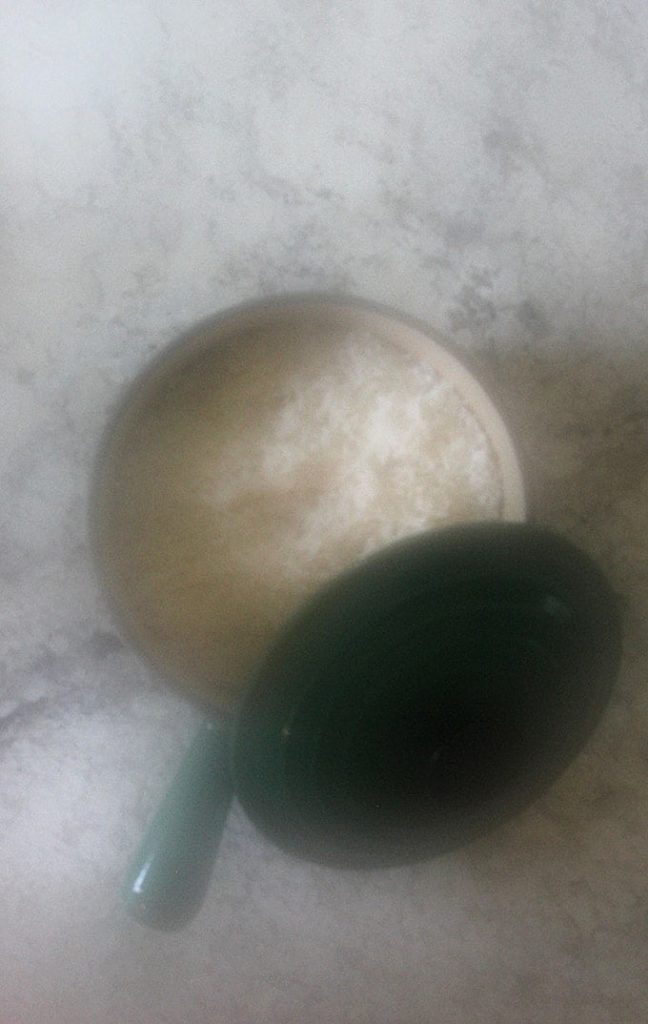
RECOMMENDED RECIPES:
Lemon Rice With Turmeric & Cashews —GET RECIPE
Simple Indian Dinner Menu: Dal and Basmati Rice
—GET RECIPE
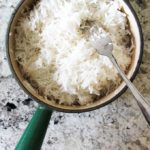
Recipe for Perfect Basmati Rice
Ingredients
- 1 cup basmati rice
- 2 cups cold water
- 1 teaspoon ghee
- pinch Himalayan pink salt
Instructions
Method 1: Steam absorption method using a saucepan
- Choose a good quality 2 to 3-quart saucepan to cook your rice. Measure the rice into your saucepan and rinse it in cold water 2–3 times. Carefully pour out the rinsing water, then add the 2 cups of water and let it the rice soak for at least 10 minutes.
- Add ghee (or oil) and salt, and bring the rice to a boil on medium-high heat. Stir the rice once gently, turn down the heat to very low, and cover. Simmer covered for 15 minutes.
- Check the rice. It should be ready. If you turn off the heat and leave it with the lid covered, it will continue to cook. Very often at this point, I find myself adding two tablespoons of water and closing the lid up. The extra water loosens the rice from the bottom of the pot, and steams it a little further for extra softness.
- Just before serving your perfect basmati rice, fluff it up gently with a fork.
Method 2: Double-steam absorption method
- This method requires a 4–6 cup heatproof bowl or metal insert. The bowl or insert must fit inside a larger pot that has a good lid.Your larger pot could be a dedicated steamer pot, or simply any large pot. A pressure cooker also works, in which case you would use the cooker's steamer function.You must also have a way to raise the rice bowl off the bottom of the larger pot, such as a stainless steel trivet, a steamer basket, or maybe even a few rocks.
- Measure the rice into your bowl or insert and rinse it in cold water 2–3 times. Add the correct amount of water and soak the rice for at least 10 minutes. Add ghee and salt.
- Prepare the larger pot by filling it with 2 cups of water and inserting the trivet or steamer basket. Place the rice inside the larger pot.
- Bring the water to a boil, cover, and turn down the heat to very low.
- Simmer, covered, for 35–45 minutes.
- Check the rice after 35 minutes. If it is not ready, or if you'd like it softer, cook for a few more minutes.
- Just before serving, fluff up the rice with a fork.
Notes
Nutrition
If you liked this post, please share it with your friends on social media, or leave a comment below.
For more Buttered Veg lifestyle content, follow me on Pinterest, Facebook, Instagram, and Twitter.
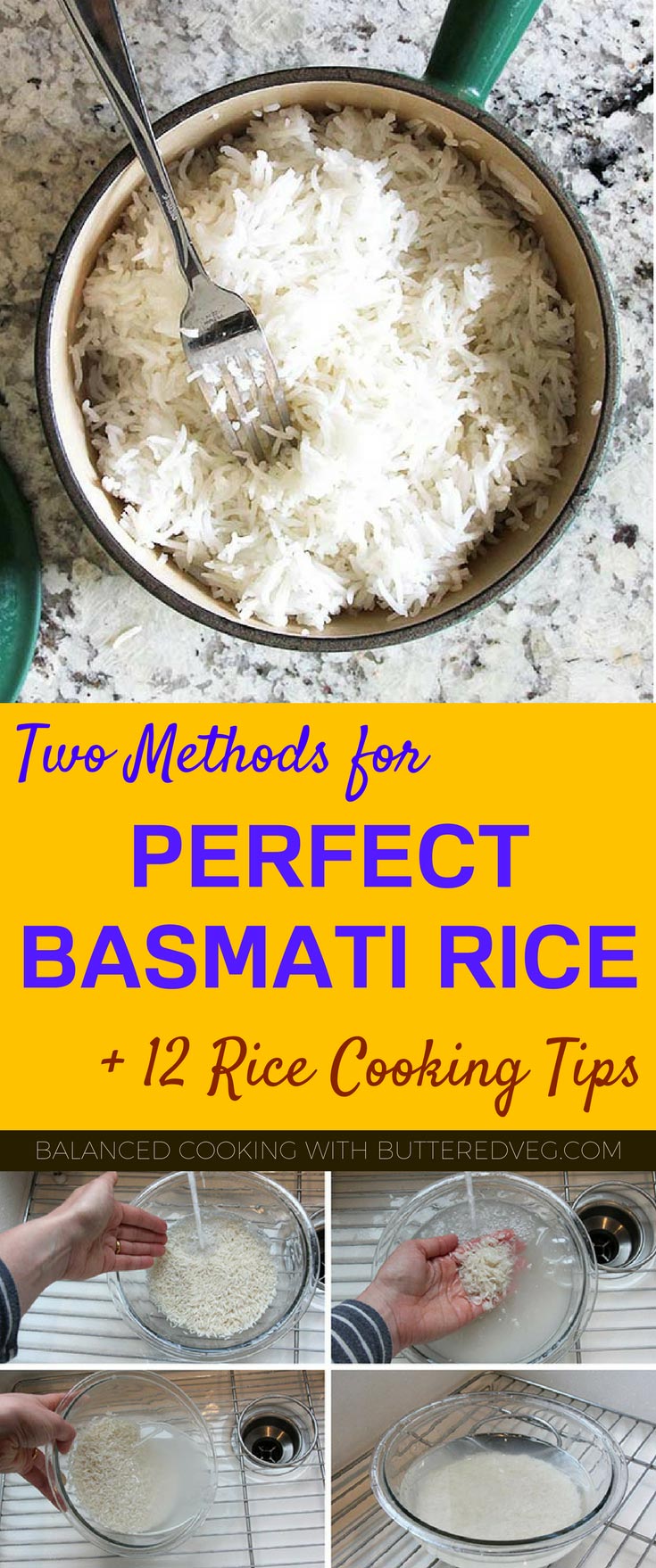

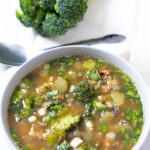


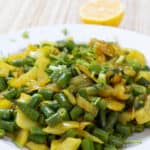




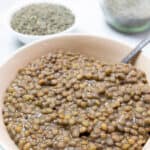
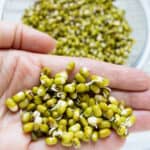
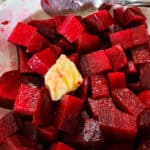

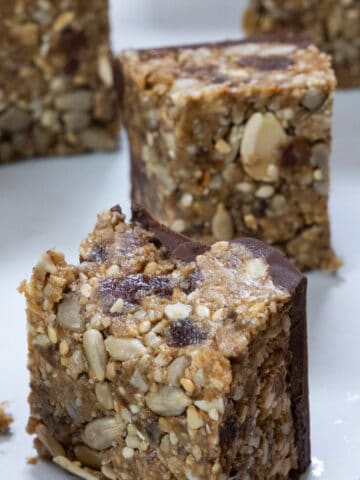
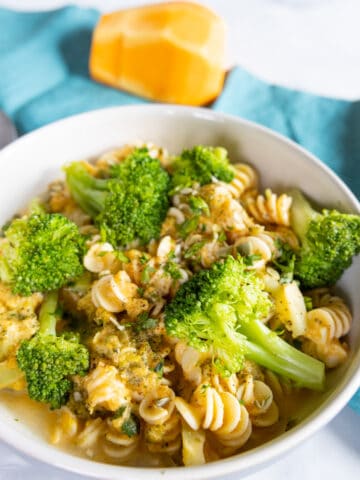
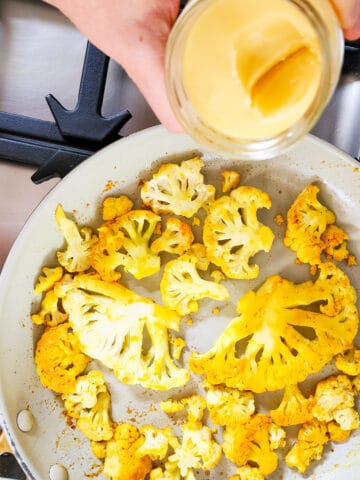
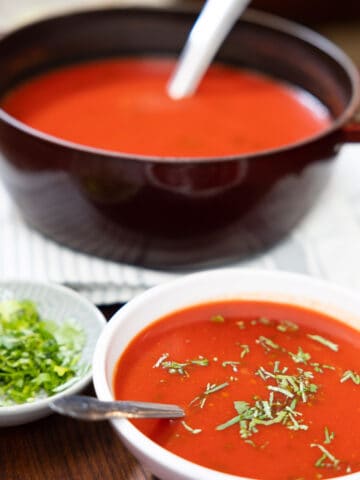
Laurence Goldman
Hi Andrea: I just got a friend's pressure cooker. 3.5 liter capacity. I wish to cook one cup brown basmati rice at a time. How to do? How much water? Is it better to use insert as I'm cooking small amount of rice for the pot?
Andrea
Hi Laurence,
Excellent that you got a pressure cooker! After you use it a few times, I think you will be very happy with how it works. For that size of cooker, I would recommend the insert. Make sure you place a trivet underneath it. Cook for 25 minutes under high pressure and allow for natural pressure release. And let me know how it goes!